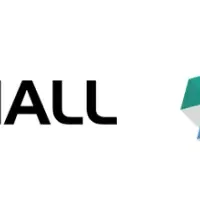
Europe's Frozen Food Market Expected to Surge by $62.5 Billion by 2029 Fueled by Vegan Trends
Growing Demand for Frozen Foods in Europe
The frozen food sector in Europe is poised for remarkable growth, with projections estimating an increase of USD 62.5 billion from 2025 to 2029. This forecast, published by Technavio, highlights a compound annual growth rate (CAGR) of 7.6% during this period. The surge in the market is significantly driven by rising consumer interest in vegan frozen food products, a trend that reflects broader dietary shifts towards plant-based options.
Key Drivers of Market Growth
A deep dive into market dynamics reveals that consumers are gravitating towards frozen food not just for convenience, but also for freshness and sustainability. The focus on reducing food waste has led to increased demand for frozen fruits and vegetables. Additionally, e-commerce platforms are enhancing the accessibility of frozen foods, catering to the busy lifestyles of modern consumers.
International cuisines are also gaining traction, prompting a variety of frozen ethnic dishes to become popular among consumers looking for new culinary experiences. However, the need for high safety standards and precautions against contamination remains paramount, raising concerns around food quality and preservation.
The Rise of Private Label Brands
Interestingly, many retailers in Europe are shifting their focus towards private-label products as a means to capture a larger market share. Excluding ice cream, which makes up a significant portion of the frozen category, there exists a vast market for other frozen items such as meat, vegetables, and ready meals. Retailers are enhancing their product offerings by dedicating more shelf space to private-label brands and introducing in-store promotions.
For instance, Coop Switzerland has recently transitioned to eco-friendly packaging, reflecting broader trends towards sustainability. The growing consumer preference for environmentally friendly options over traditional packaging methods is an indicator of changing consumer values.
Challenges Facing the Industry
Despite this promising landscape, the European frozen food market faces several challenges. The reliance on cold storage and distribution systems is a critical issue, particularly in Eastern European nations where refrigerated transport may be lacking. Vendors must ensure that their products are stored at optimal temperatures to maintain quality, which can be a logistical hurdle in regions where cold chain infrastructure is underdeveloped.
Additionally, there is a growing demand for fresh alternatives, which poses competition against frozen offerings. This trend pushes manufacturers to innovate and improve their product lines to match consumer aspirations for health and freshness, and to address concerns over additives and nutritional value.
Segment Breakdown and Market Dynamics
In examining the market segmentation, it becomes clear that offline sales channels remain dominant in the frozen food space, predominantly led by supermarkets and hypermarkets. These retailers not only offer a broad selection of frozen products, including meats and vegetables, but also focus on premium products that align with consumer expectations for higher quality items. The increasing popularity of online shopping is steadily shaping the competitive landscape, although consumers still favor the ability to physically inspect products before making purchases.
The food service sector also plays a crucial role in the frozen food market, leveraging frozen offerings extensively for catering and restaurant services. There is a significant presence of frozen dairy products, seafood, and other staple items that meet the needs of this industry.
Conclusion
The future of the European frozen food market appears robust, with continued growth driven by evolving consumer preferences, technological advancements in freezing, and an increasing commitment to sustainable practices. As the market adapts to these trends, players within the sector will need to navigate the challenges while capitalizing on opportunities presented by the dynamic landscape of frozen food consumption in Europe.
In conclusion, the projected growth, evolving consumer habits, and technological innovations make the European frozen food market an exciting arena to watch in the coming years.
Topics Consumer Products & Retail)










【About Using Articles】
You can freely use the title and article content by linking to the page where the article is posted.
※ Images cannot be used.
【About Links】
Links are free to use.